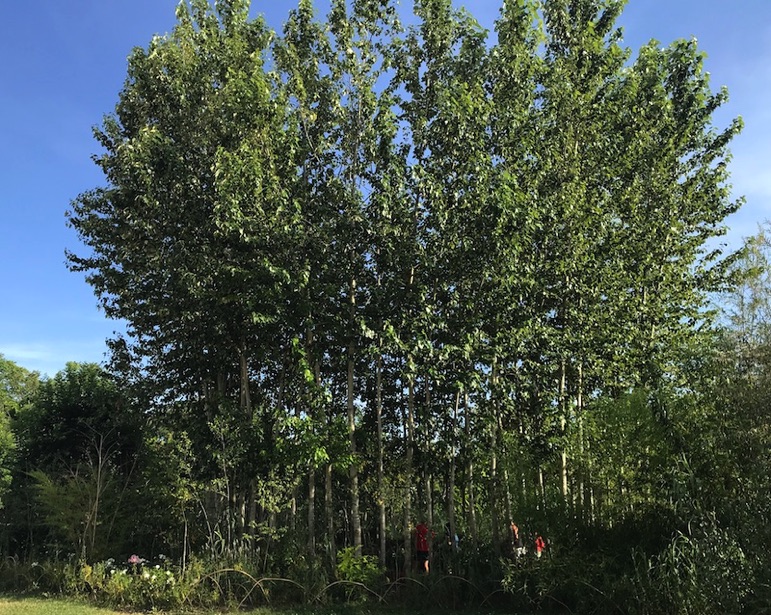
Wed 17 July - battery testing, cactus, closed, Arc et Selens, Bouchon de Radeliers
This morning was the morning of the great battery testing. At 0830h, the H2O electrician arrived to disconnect the batteries and turn off the shore power. He then said he would be back around 1100h to test each battery individually, leaving us for 2 hours without power. But luckily our phones and computers were charged enough to keep us happily occupied until he returned. When he returned, he ran a test on each of the batteries and got a printout of the state of each battery. I thought it was amazing that the same word was used to describe them in both French and English - "cactus" (but on checking with Rita, he said something slightly different, even if the meaning was the same). Since it was nearly noon by now, he advised us to go up to the Capitainerie to talk with Vasily about replacement battery options. So we had some lunch and then did some more research on battery options, and went down to talk with Phil, before heading up to the Capitainerie just after 1400h, only to find it was closed for the afternoon (even though the sign on the door said it was open every weekday between 1400h and 1900h). The girl in the main admin office said we would need to come back in the morning, because only Vasily knew about batteries. To say that we were less than impressed would be a slight under-statement.
So, since it was pointless hanging around the port, we decided to take the car and go see some more sights in the Jura. After studying the Guide Book for a while, we decided to go to Saline Royale, the old saltworks at Arc et Selens, near Dole. Along the way, we saw a farm with what initially looked like lawn being grown.
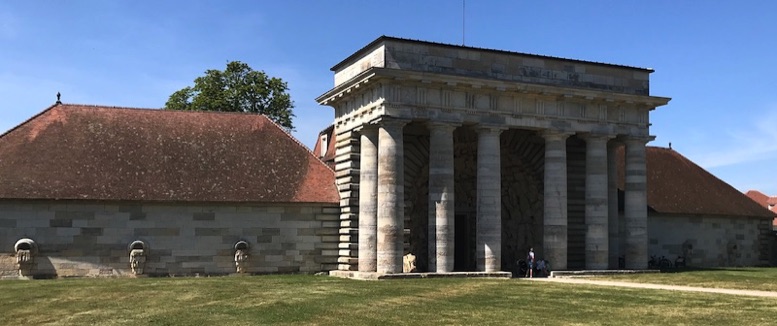
On our way in, we saw this aerial photo which gave us a much better overview of the entire complex, with the entrance at the bottom of the semi-circle.
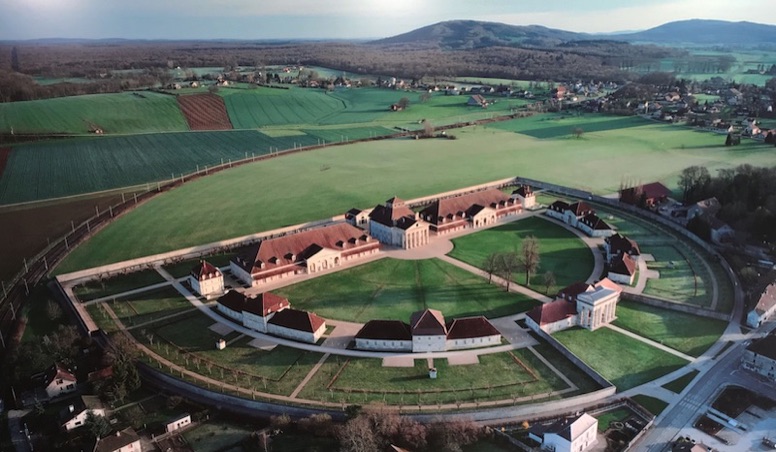
Directly ahead of the entrance, at the centre of the semi-circle, was the main building - the saltworks Director's home.
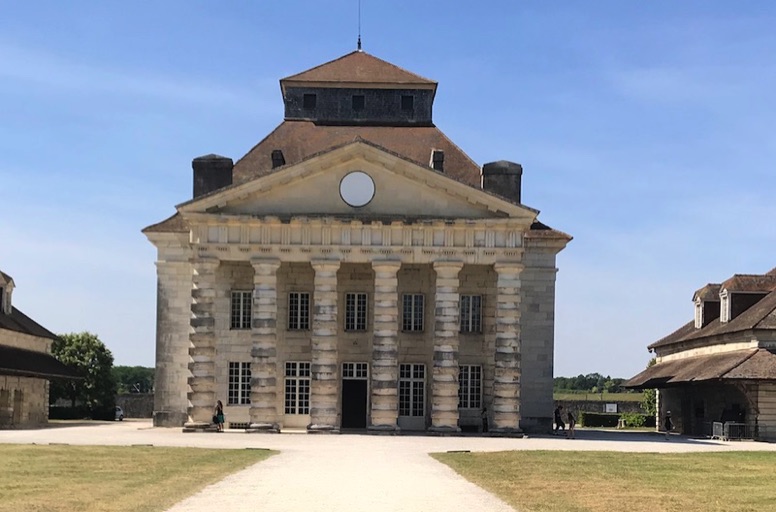
The columns on the portico of this building were quite spectacular, and something I had never seen before, consisting of alternating slabs of stone in rectangular and circular shapes. The interior of this building has been totally renovated into a series of exhibition rooms. The ground floor was dedicated to a description of the old saltworks themselves, dating back to around 1775, while the second floor was currently hosting an exhibition of the life and works of Jules Verne.
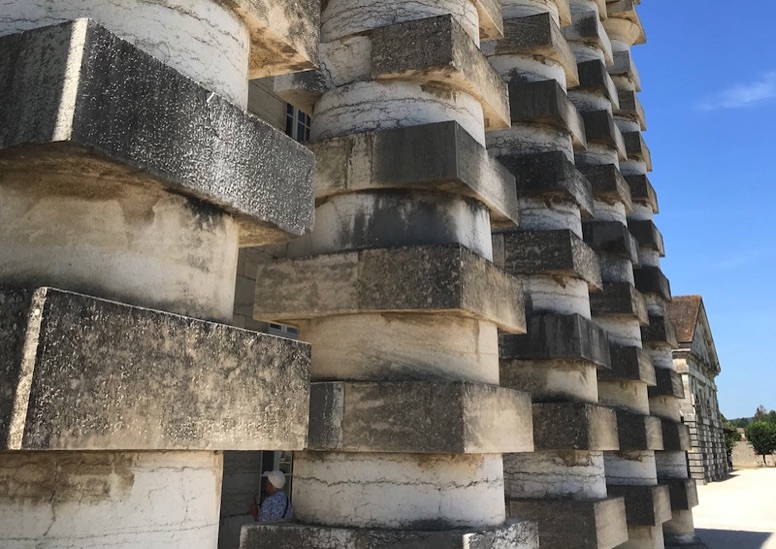
The buildings on each side of the main building were 80m long by 25m wide, were identical (but mirror-imaged) and were the places where the brine solution was boiled down in large copper trays to produce the crystalline salt.

One of these buildings had been converted to a conference centre and assocaited office space and breakout rooms, and was closed to the public. But the other (the one above) was open to the public, and so we wandered inside. And WOW!!

The internal architecture was spectacular to say the least (especially considering how original the exterior had been kept). It just forced one to stand still and look up. The arches and beams looked lke laminated timber, but were actually an early use of reinforced concrete. Just beautiful!
The space was currently being used for a 50-year anniversary tribute to Woodstock 1969. The contrast between the archtecture and the sights and sounds of the exhibut were something to behold.

It was great fun going through the exhibition space at one end of the building, looking at the wall sized videos of Woodstock performers and listening on the headsets provided on the walls. No prizes for guessing these three.



However, as time was moving on, we also had to keep moving on if we were to see the rest of the saltworks complex. So we headed outside and Rita decided to look at the gardens behind the old Workers' Residences, while I headed for the Ledoux Museum which was housed in one of the four symmetrical buildings placed around the semi-circle.
A pleasent one-hour drive saw us arriving at Arc et Selens around 1600h. The entrance was located on the edge of town, and while impressive, it did not really convey the grandeur to follow. We paid our 10.50€ entrance fee and took our self-guiding headsets, and off we went.
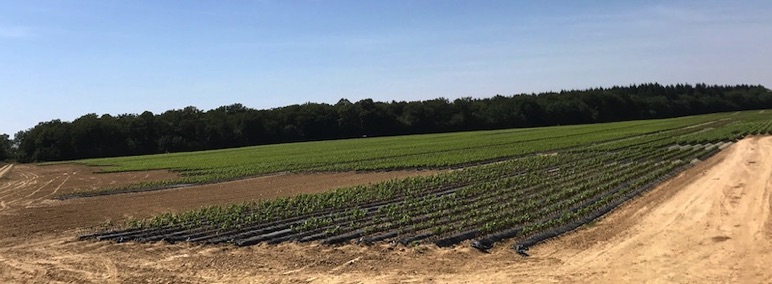
But as we slowed down, and then stopped for a better look, it was clear that they were individual plants, which on closer inspection turned out to be vineyard cuttings. I've never seen such a farm before and it now explains the early life of many vineyards.
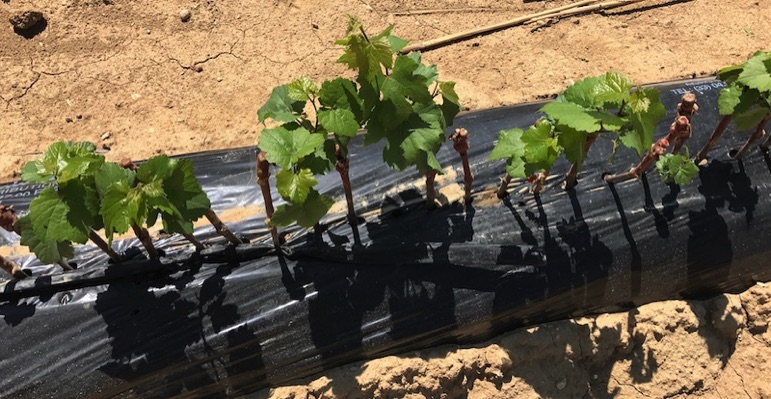
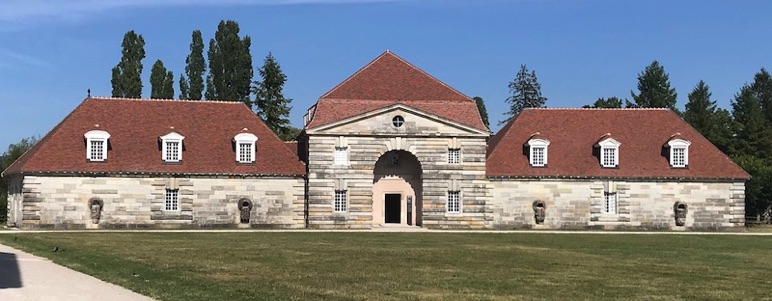
The Ledoux Museum was dedicated to the works of the architect who imagined the saltworks complex, Claude Nicolas Ledoux. The museum building has retained the original structural timberwork (reminded me of the first time I saw inside the roof of our house in Moissac), and was filled with scale modells and descriptions of Ledoux's many other creations, including this one of a theatre in Besançon.
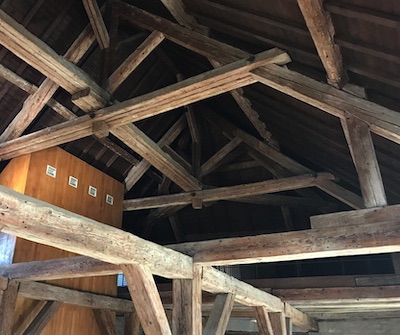

As I was leaving the museum, I got a text message from Rita saying that the gardens were fabulous and that I should come look. So I went around the back of the museum building, and realised what she meant, with many different styles of garden created in the area previously used by the workers as vegetable gardens. I started looking for Rita in one of the gardens, which was a ring of trees, sheltering a lush garden kept moist with a water mist system that actuated every time you entered. Within the circle are various seating places, giving the perfect hideaway on a hot day. It reminded me of the area that my daughter Emma is creating with partner John on their farm near Castelmaine in Victoria - food for thought! The panorama photo below is slightly misleading - the trees at far left and far right are only about 1m apart, at the entranceway to the garden.

I continued searching for Rita and finally found her in a modern garden featuring many mirrored pyramids, which gave unexpected views of other parts of the garden and of the old saltworks buildings in the background. Great place for faux-selfies.
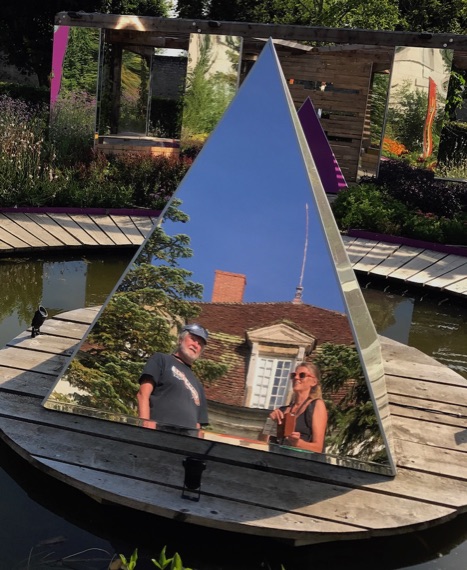
Finally after several hours, we dragged ourselves away from Saline Royale at around 1900h, even though there was lots more to see, and started the drive back to SJDL. But by now we were getting hungry, and so we kept an eye out for any small country restaurants. And as luck would have it, we found one (Le Bouchon des Radeliers) as we drove through the town of Chamblay. We quickly pulled over and walked back, to find it empty, but with staff setting the tables for an evening's trade. We had cool drinks, entrees and dessert, and by the time we left just after 2100h, it was packed (and this was a Wednesday night). Very cute and folksy, with handwritten, but extensive, menus, and all good quality food. It even had a classic French waiter standing next to their long list of awards, and meringues with coffee (just for you, Flis). Highly recommended.

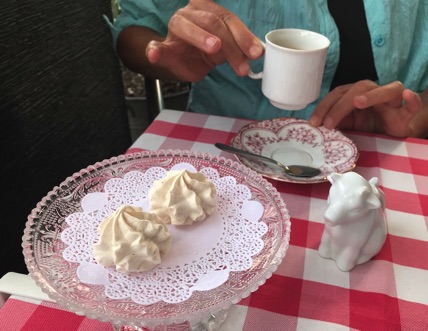
After 2200h, we arrived back in SJDL, tired but happy. One thing about the barge being immmobilised is that you get to see many other things (if you have a car available) that you might never have had time to see otherwise.
